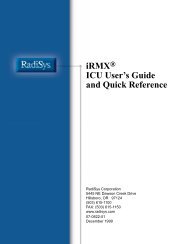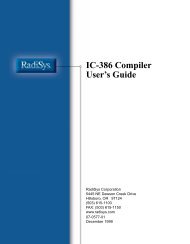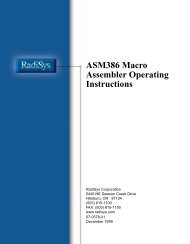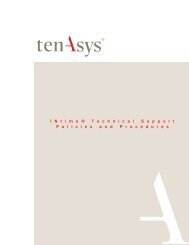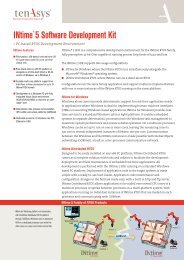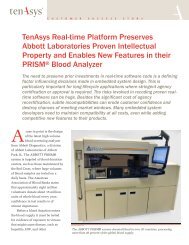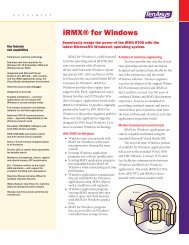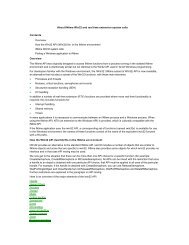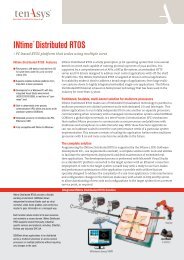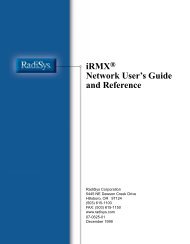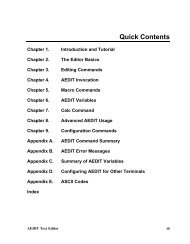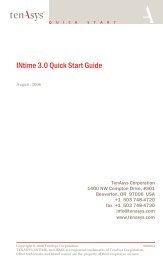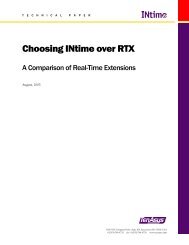INtime® 3.1 Software - tenAsys
INtime® 3.1 Software - tenAsys
INtime® 3.1 Software - tenAsys
You also want an ePaper? Increase the reach of your titles
YUMPU automatically turns print PDFs into web optimized ePapers that Google loves.
Chapter 1: Overview<br />
• Remote configurations: INtime software keeps RT processes in separate<br />
segments. Keeping them separate from the RT kernel isolates and protects<br />
addresses between complex RT processes.<br />
• Paging: (used in both INtime and RT nodes) The RT kernel uses the processor’s<br />
paging mode for virtual address translation, but does not implement demand<br />
paging. Each RT process loads into its own virtual address space, defined by a 32-<br />
bit virtual segment. Because code, data, and stack are automatically placed in noncontiguous<br />
areas of the application’s virtual memory, memory overruns are trapped<br />
as page faults.<br />
• Virtual addressing: (used in both INtime and RT nodes) Since each RT process<br />
resides in a separate memory space defined by a virtual segment created by the RT<br />
Application Loader, RT processes cannot address beyond the virtual segment. This<br />
effectively partitions every RT process into its own address space.<br />
Blue screen protection<br />
On an INtime node, the RT kernel enables successful execution of RT threads even in<br />
the event of a total Windows failure, also known as a “blue screen crash.”<br />
• Failure diversion: HAL modifications capture Windows failures. Once captured,<br />
control transfers to the RT kernel, Windows operation suspends, and RT threads<br />
continue to run, unaffected by the failure.<br />
• Application-specific recovery: (used only in local INtime system configurations)<br />
In the event of a Windows failure, your crash recovery RT threads run and you can<br />
execute an orderly shutdown of the hardware your INtime application controls.<br />
Note<br />
Remote INtime configurations do not require blue-screen protection because RT processes<br />
execute on dedicated hardware, separately from Windows. This means a crash, reboot, or<br />
restart of the Windows system does not interrupt execution of remote RT processes.<br />
In the event of a Windows blue screen crash, INtime software keeps running until a<br />
graceful shutdown occurs. To start INtime software again, you must first restart<br />
Windows.<br />
13



